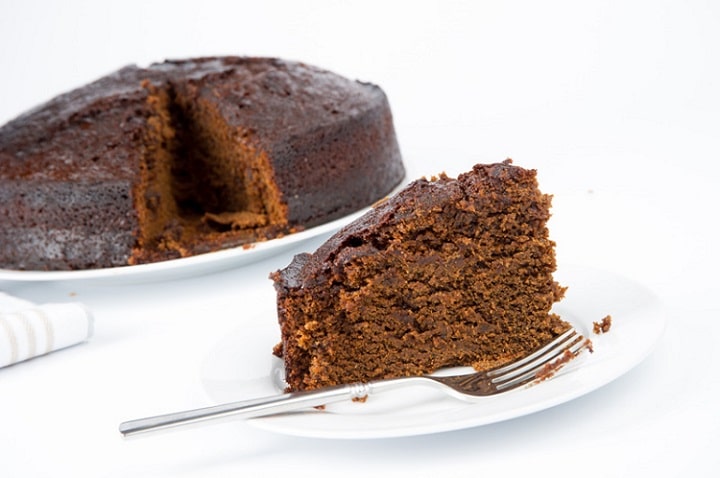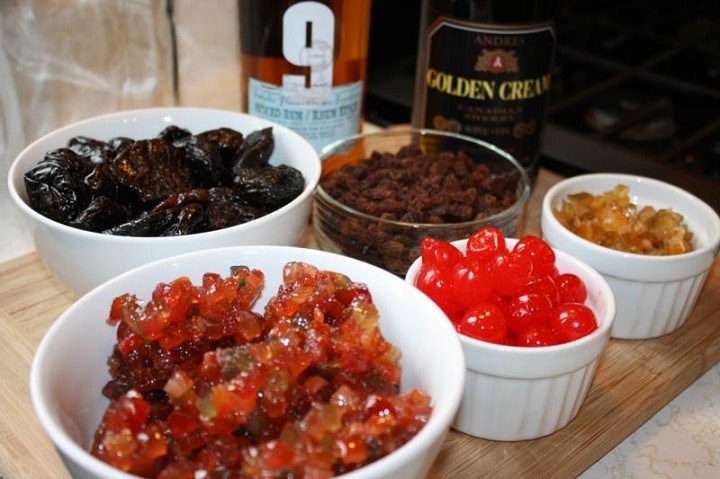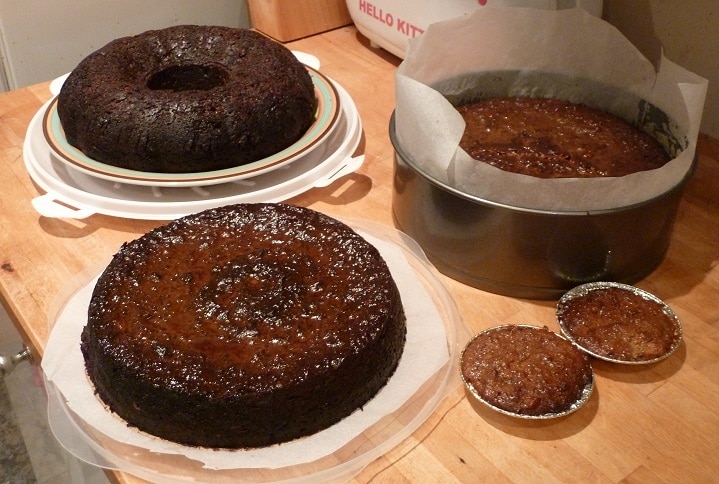A popular dessert during the Christmas season, the Jamaican rum cake is a rich, fruit-laden confection soaked in a number of liquors that may include port wine or even stout, but always include rum. The addition of alcohol not only flavors this seasonal treat, but also preserves it for weeks. Delicious with a cup of coffee, tea or a customary glass of rum, it’s a delicacy that has deep cultural and historical roots.

A History of the Jamaican Rum Cake
The Jamaican rum cake, also known as Jamaican black cake, is related to rum cakes popular across the Caribbean region. Thought to have originated with British colonists who brought recipes for steamed fruit puddings with them as they began settling in the islands in the 18th century, Caribbean rum cakes incorporated local produce and liquors, evolving into a unique confection. Culturally, the gift of a Jamaican rum cake implies a deep friendship with the recipient. The ingredients can be costly and the preparation is an intense labor of love, making it a truly valued token of esteem.
Chefs hundreds of years ago had to contend with warm Caribbean temperatures when storing food. Sugar played an integral role in preserving fruits and cakes, as did the addition of alcohol. Traditional English figgy puddings served during the Christmas season are thought to be ancestor of the rum cake. The extensive sugar plantations scattered across the Caribbean made this delectable dessert affordable, as the availability of sugar caused the price to drop. The inclusion of ingredients like rum, sugar and molasses make this cake a historic, edible relic of the sugar trade and hundreds of years of Caribbean history.
How to Prepare Jamaican Rum Cake at Home
While recipes may differ in ratio or kinds of fruit, two things remain true across the Caribbean: the need to soak fruits in alcohol for an extended period and the addition of browning. Many chefs reckon the perfect time to start soaking the fruit in the liquor concoction is toward the end of hurricane season or starting in late September.
The ingredient that gives the cake its rich, deep color is a burnt sugar mixture, also known as browning, which can be made at home or found bottled in Caribbean markets.

Days, weeks or ideally, months in advance, combine in a bowl or glass jar:
- 1/4 C Jamaican dark rum; Appleton is a traditional brand.
- 1 C Stout or other dark beer.
- 1/2 Tblsp Angostura Bitters.
- 1/4 C Sweet wine; Manischewitz works nicely. For a stronger flavor, substitute a fruit brandy like Calvados.
- 2 C dried fruits. A mixture of cherries, raisins, cranberries, currants, prunes or any other favorites will work nicely.
Allow the fruit and alcohol to marinate in the refrigerator, topping up the alcohol as it is absorbed by the dried fruit every few days.
On baking day, you will need:
- 1/2 C Brown sugar, plus two tablespoons if making browning.
- 1 1/2 sticks butter, room temperature.
- 3 eggs.
- 1 Teaspoon Almond extract.
- 1 Teaspoon Vanilla.
- 2 Tbsps. Browning, homemade or store-bought.
- 1 Teaspoon Lime zest.
- Boiling water, at least two tablespoons.
- 1 Teaspoon mixed spices, such as cinnamon, cloves, allspice.
- 1/4 Teaspoon nutmeg.
- 1 Teaspoon baking powder.
- 1 C All-purpose flour.
Heat your oven to 350 degrees. In a blender, puree fruit and alcohol mixture. Set aside.
To make the browning, heat a heavy-bottomed saucepan over medium heat and add two tablespoons of brown sugar. In a teapot or pan, heat a small amount of water to the boiling point and add by drops to the heated sugar, mixing with a wooden spoon. The sugar mixture should become dark and caramelized, but be careful not to burn it. Set aside.
In a bowl or mixer stand, cream the sugar and butter together until thoroughly combined. Add the eggs, mixing until the batter lightens in color. Add the almond and vanilla essences, lime zest and browning. Mix to combine.
In a separate bowl, sift together flour, baking powder, and spices. Add this dry mixture to the batter, incorporating thoroughly. Add pureed fruit, mixing by hand until combined. Pour into a nine-inch cake pan and bake until a toothpick inserted in the center comes out clean, about an hour to an hour and 15 minutes. Remove cake from oven and pour 1/4 cup of rum over it before it cools.
The flavor will develop and deepen over time, and additional rum can be added if the cake’s top begins to dry. The Jamaican rum cake will keep nicely for up to two weeks in the refrigerator. Serve it with a favorite beverage.
Where Can You Try Jamaican Rum Cake in a Restaurant?
Large populations of people from across the Caribbean can be found in cities like New York or Miami, and it’s in one of these vibrant communities that you’ll be most likely to sample homemade-style Jamaican rum cake. Sweet Delights on Dixie Highway in Miami is just one restaurant serving up a number of Jamaican delights, and rum cake is always on the menu.
In Jamaica, Kingston’s Grog Shoppe on Hope Road serves their unique rum cake recipe with a coconut-infused rum sauce on the side.
Whether you enjoy a wonderful slice of Jamaican rum cake in a restaurant or try your hand at making it at home, you can savor its complex flavors and rich history in every delicious bite. It’s the perfect way to celebrate Jamaican holiday traditions with your family or friends, and the recipe can easily be doubled or quadrupled if you want to make gifts for a special occasion. Have you sampled this delicious treat? Maybe you have a treasured recipe you’d like to share with others? Tell us your favorite thing about Jamaican rum cake in the comments.

